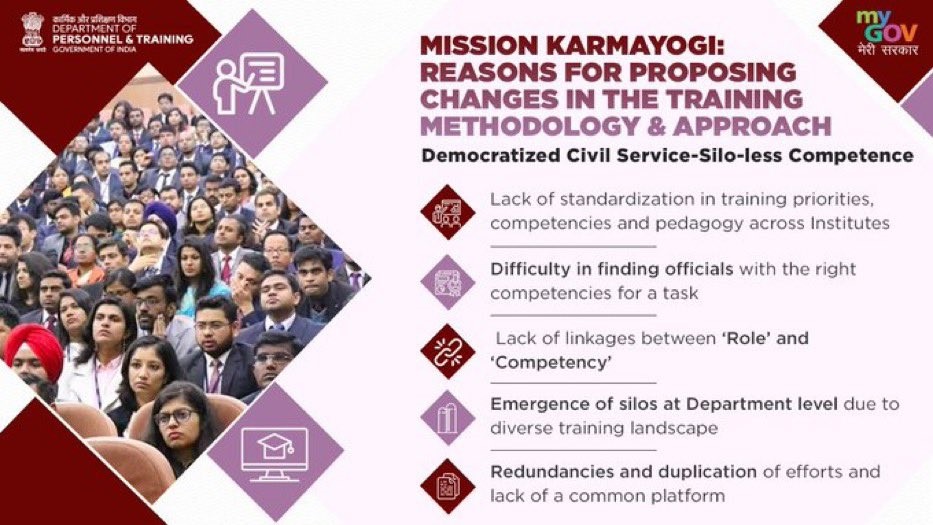2019 Start-up Ecosystem Rankings of Indian States
- In Economics
- 12:20 PM, Sep 20, 2020
- Mukul Asher and Vivek Singh
The start-up India initiative was launched in January 2016 by the Indian government 1. India has the third largest start-up ecosystem in the world, with about 32 Unicorns (market valuation greater than USD one Billion), and about 28,000+ recognised start-ups; with USD 50 Billion raised by the start-ups between 2014 and 2019 2.
In the 2020 ranking of global start-up ecosystems by Startupblink, India dropped by six ranks to twenty third among 100 countries. Internet speeds and power quality issues need to be addressed, and so does greater focus on ranking of its top cities for start-ups such as Bangalore, Delhi, and Mumbai 3.
It is in the above context that the Department for Promotion of Industry and Internal Trade (DPIIT) conducted the States’ Start-up Ranking 2019 Exercise (Second edition), with key objective to foster competitiveness and propel States and Union Territories to work proactively towards uplifting the start-up ecosystem. The Report was published in 20204. The above report provides an overview of the start-up system of each state and Union Territory (UT).
Start-up enterprises are crucial for the development and competitiveness of a state, region, or a country as they bring in new entrepreneurs with new ideas and technology adaptations to a variety of economic and social areas, raising efficiency and productivity. It is urged that key states take the initiative to construct data on formation of net start-ups (new start-ups less those exiting).
The underlying premise of the rankings, which is strongly supported by academic research, is that ideas are among the most important factors of production.
The DPIIT has appropriately argued that the purpose of such rankings is to develop capacity building among the states, and to encourage mutual learning among all states, thus providing support in policy formulation and implementation. A state, regardless of the ranking, should have a standard policy of how to use them to improve in those areas where it is deficient.
Methodology of Rankings
In the 2019 rankings 22 States (out of 28 states) and 3 Union Territories (UTs) (out 0f 8) participated. To establish uniformity and ensure standardization in the ranking process, States and UTs have been divided into two groups.
Category Y comprises all UTs except Delhi, and all States in North East India except Assam. Category X comprises all other States and UT of Delhi.
The score for the 2019 rankings has a weight of 76% on the feedback on reforms obtained, with remaining based on the reporting by the states. This emphasis on findings from users of start-up initiatives by each state should be welcomed. But it requires judicious and objective interpretation. This is the second set of rankings, with the first set for 2018 published in 2019 5.
The State/UT Start-up Ranking Framework’ 2019 is spread across seven areas of intervention with a total of Thirty action points, as compared to the Thirty-Eight action points in the Previous Year Ranking Framework.
There were seven areas, with action points for each area, and weightage as shown in Table 1 6
Table 1 DPIIT Framework: Areas, and weightage for 2019 State Rankings
|
|
Framework Pillar |
Number of action points |
Area- wise score |
|
|
Institutional Support |
8 |
24 |
|
|
Simplifying Regulations |
3 |
12 |
|
|
Easing Public Procurement |
6 |
14 |
|
|
Incubation Support |
4 |
23 |
|
|
Seed Funding Support |
3 |
11 |
|
|
Venture Funding Support |
2 |
8 |
|
|
Awareness and Outreach |
4 |
8 |
|
|
Grand Total |
30 |
100 |
Rankings
To ensure seamless dissemination of information and transparent system for collection of responses from the states and Union Territories (UTs), the Start-up Ranking portal was launched on 6 February 2018 alongside the launch of State Start-up Ranking Framework, 2018 7.
The States and UTs were classified as: Best Performers (100 percentile), Top Performers over 75 but less than 100 percentile), Leaders (between 30 and 74 percentile), Aspiring Leaders (between 10 and 30 percentile) and Emerging Start-up Ecosystems. (less than 10 percentile) 8.
These are rather generous grades designed to encourage states to continue efforts to improve, and give substance to cooperative but constructively competitive federalism
Table 2
Category “X” States: Ranking
|
BEST PERFORMER |
Gujarat |
|
TOP PERFORMERS |
|
Kerala |
|
LEADERS |
Bihar |
Maharashtra |
Odisha |
Rajasthan |
|
ASPIRING LEADERS |
Haryana |
Jharkhand |
Punjab |
Telangana |
Uttarakhand |
|
EMERGING STARTUP ECOSYSTEM |
Andhra Pradesh |
Assam |
Chattishgarh |
Delhi |
|
Himachal Pradesh |
Madhya Pradesh |
Tamilnadu |
Uttar Pradesh |
Category “Y” States: Ranking
|
BEST PERFORMER |
Andaman & Nicobar Islands |
|
TOP PERFORMERS |
- |
|
LEADERS |
Chandigarh |
|
ASPIRING LEADERS |
Nagaland |
|
EMERGING STARTUP ECOSYSTEM |
Mizoram |
Sikkim |
In the 2019 rankings, there are only three states, Gujarat, Karnataka, and Kerala, and one UT, Andaman and Nicobar Islands, which score above 75th percentile. Gujarat topped the ranking in 2018 as well.
Ranking of Uttar Pradesh, which is emerging as a dynamic state with potential to contribute positively to India’s growth, as only Emerging Start-up (score of less than 10 percentile) is surprising. The policymakers in Uttar Pradesh (and seven other states and 2 UTs in this category) need to take initiatives to improve this ranking. (Table 2)
But when ranking of seven pillars in Table 1 are examined individually, rankings differ. Gujarat is a leader in only three out of seven areas. These are incubation Hubs (weight of 23 percent), awareness and outreach campaigns (weight of 8 percent), and scaling innovation leaders (not shown separately in Table 1).
Karnataka is a leader in institutional support (24 percent weight), procurement (14 percent support), and regulatory change (12 percent weight).
Kerala is among the leaders in institutional support, procurement, seeding innovation leaders, regulatory change, and scaling innovations. It thus has a strong start-up ecosystem.
Bihar ranks well, leading in seed innovation leaders. There are eleven states which are leaders in at least one category (Table 3). This suggests that the state start-up ecosystem is well diversified. It also suggests that each state has something to learn from the others, and to strive to improve.
Table 3: Leaders across Seven Reform Areas in 2019 in DPIIT Rankings 8
|
S.No |
Pillar |
Leaders Name |
|
|||
|
1 |
Institutional Leaders |
Karnataka |
Kerala |
Odisha |
||
|
2 |
Procurement Leaders |
Karnataka |
Kerala |
Telangana |
||
|
3 |
Incubation Hubs |
Gujarat |
Karnataka |
Kerala |
||
|
4 |
Seeding Innovation Leaders |
Bihar |
Kerala |
Maharashtra |
||
|
5 |
Awareness and Outreach Champions |
Gujarat |
Maharashtra |
Rajasthan |
||
|
6 |
Regulatory Change Champions |
Karnataka |
Kerala |
Odisha |
Uttarakhand |
|
|
7 |
Scaling Innovations Leaders |
Gujarat |
Kerala |
Maharashtra |
Rajasthan |
|
The on-going constructive competition among the states is illustrated by the reports that Gujarat is building an incubation centre, which can accommodate 1400 start-ups in an area of 12700 SQ metre, on the premises of Knowledge Consortium of Gujarat (KCG). It is to be completed by 2022 9.
Other states are also likely to be taking similar initiatives. The rankings can therefore change, and quality of governance and leadership of the state are crucial.
The DPIIT Report has suggested that there is a need to ease the access to funding to Start-ups, especially those from small cities and the need for simplification of regulations. The central and state governments would have to invest heavily in Research & Development and upcoming technologies, to build further on their competitive value addition to this exercise.
DPIIT Survey on Ease of Doing Business: 2019 Rankings
DPIIT also conducts annual survey of states concerning Ease of Doing Business (EODB) 10. Its components are
- Getting Credit
- Paying Taxes
- Resolving Insolvency
- Construction Permits
- Getting Electricity
- Registering Property
- Enforcing Contract
- Starting a Business
- Trading Across Borders
There is an anomaly in the ranking in the two surveys.
Top three states in Its 2019 rankings are Andhra Pradesh, Uttar Pradesh, and Telangana, while Gujarat is ranked tenth out of 36 entities ranked.
But in the start-up survey, Gujarat is ranked number one, Telangana is ranked as aspiring leader, the second lowest category, and Andhra Pradesh and Uttar Pradesh are ranked in the lowest category of Emerging Start-up Ecosystem.
The above represents an anomaly which needs to be researched. While analysts and think tanks could devote their resources to explaining the anomaly, it is also urged that DPIIT as agency responsible for both surveys also undertake analysis of its results to better guide the states about the policy reforms and their implementation. The states should also carefully examine their rankings across various surveys, consistency of results, and policy implications arising from them.
Concluding Remarks
The purpose of ranking of states, whether for start-up ecosystem, Ease of Doing Business (EODB), or other areas, is to help states improve their competitiveness and enhance efficiency and productivity, while learning from other states. It does require a mindset and attitude among the government leaders and among the bureaucracy as well as private and civil society stakeholders which is constructive and outcome oriented.
As complexities of management increase, states are strongly urged to consider how they can adapt the Centre’s Karmayogi scheme, designed to create requisite skills and attitudes among the government officials, for improving their management.
It will be for the first time that the Prime Minister will be chairing Human Resources Council.
The reasons for the Karmayogi scheme are shown below-

As Sanjeev Sanyal, Principal Economic Advisor, Government of India has argued 11- “The overall direction of the reform effort should be clear — to improve the inflow/outflow of personnel, rationalise processes, weed out redundant bodies and upgrade the interface with the citizen. The momentum is only going to accelerate.”
- https://www.startupindia.gov.in/content/sih/en/about-startup-india-initiative.html Accessed on 16 September 2020
- https://www.startupindia.gov.in/ accessed on 15 September 2020
- https://www.businessinsider.in/business/startups/news/india-drops-six-places-in-the-ranking-for-worlds-best-startup-ecosystems/articleshow/76057610.cms Accessed on 23 July 2020
- https://www.startupindia.gov.in/srf/index.html Accessed on 19 September 2020
- https://www.startupindia.gov.in/content/dam/invest-india/Templates/public/State%20Startup%20Ranking%20Report%202018.pdf Accessed on 15 September 2019
- https://www.startupindia.gov.in/srf/index.html Accessed on 19 September 2020
- https://www.startupindia.gov.in/srf/
- https://pib.gov.in/PressReleasePage.aspx?PRID=1653368 Accessed on 19 September 2020
- https://ahmedabadmirror.indiatimes.com/ahmedabad/cover-story/forget-silicon-valley-gujarat-is-creating-its-own-innovation-hub/articleshow/78116197.cms Accessed on 19 September 2020
- https://eodb.dipp.gov.in/ Accessed on 19 September 2020.
- https://www.hindustantimes.com/analysis/transforming-public-administration/story-PZEGbLXbUIAR9Q3fQ0XmvJ.html Accessed on 15 September 2020
Image Credits: Fresherslive







Comments